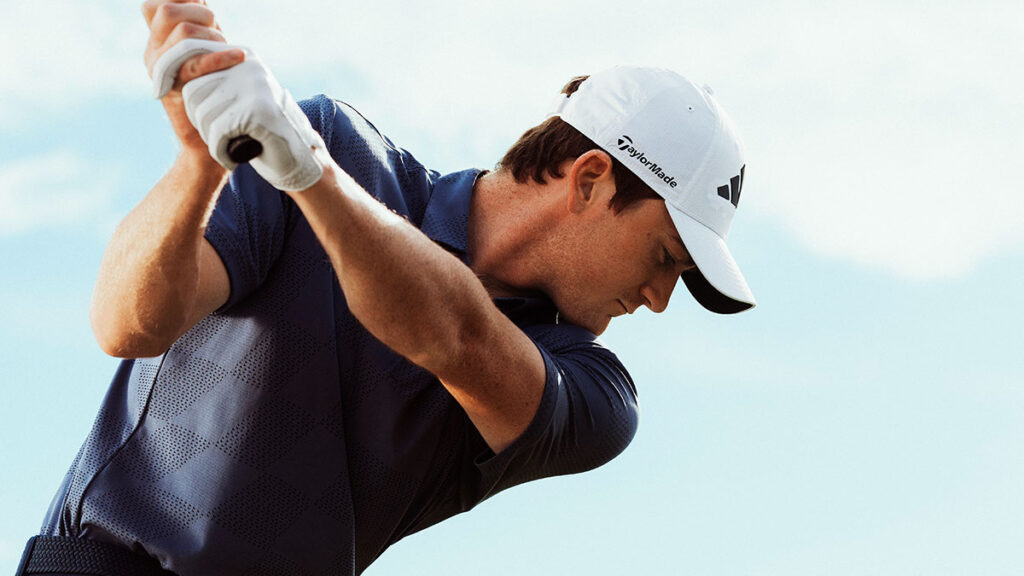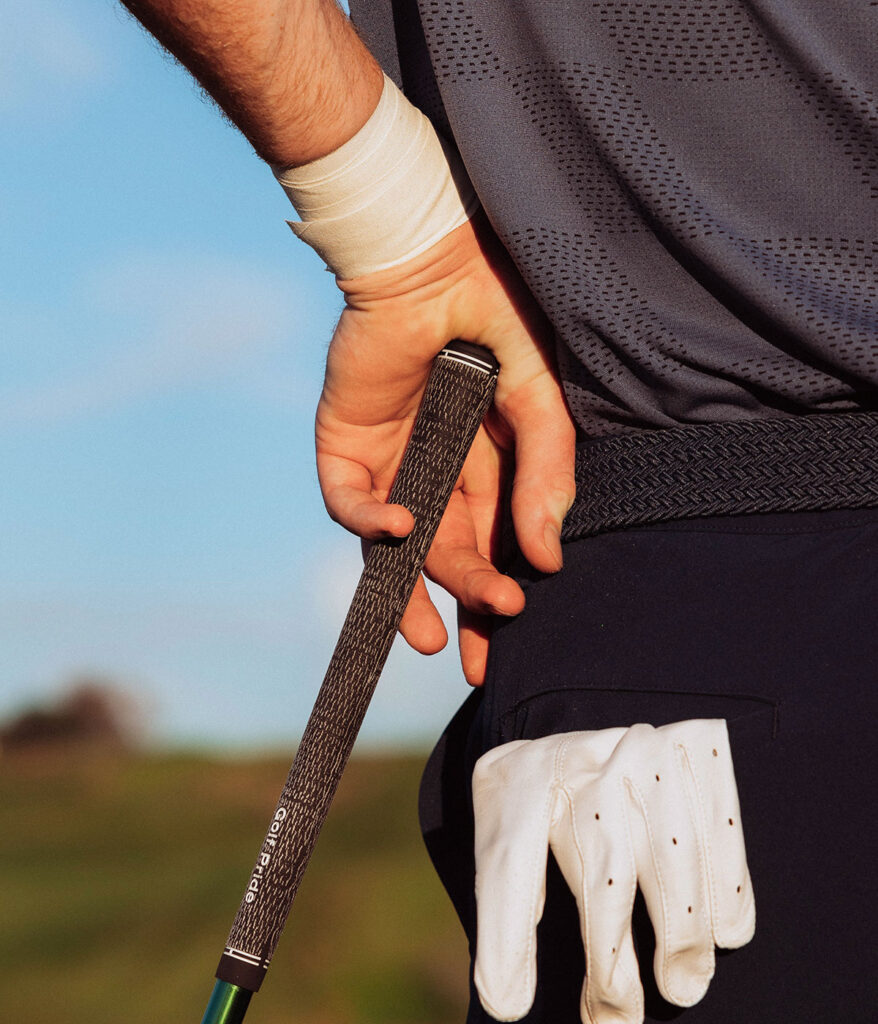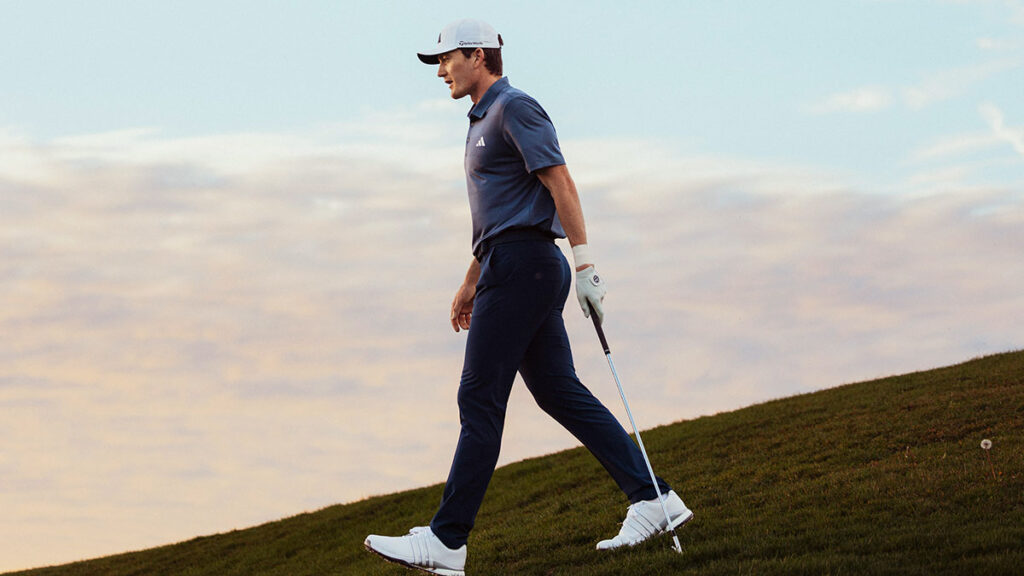We all have it wrong. Twenty-year-old Nick Dunlap has it right
Walk the range at a top amateur event, and each swing looks better than the last. On tour ranges, you’ll see so many balls disappear into the horizon, you can’t say who’s in for a career week and who’s slotted for dead last.
In five months, Nick Dunlap emerged from both these settings as a champion. Yes, Nick hits it plenty long and putts great, but a lot of players fit that profile who don’t win the US Amateur and then become the first amateur to win a tour event in 33 years. What’s Nick’s secret? Hint: the driving range isn’t where you should look.
Nick’s greatest asset is his mindset, which is a confluence of many factors but still the easiest
part of the game for any golfer to put into action. Even among the major champions I work with, Nick might provide the clearest model for how to compete.
Although it might seem odd to draw wisdom from a 20-year-old kid who just turned pro out of the University of Alabama, it’s even odder for me considering the beginning of our relationship. Nick and I both lived in Birmingham and played out of the same club, Greystone Golf & Country Club. Like a lot of junior golfers, Nick was a promising player but occasionally temperamental – “a little brat” is how he described himself after his win at the American Express tournament. As the story goes, Nick was on the range practising with his father and struggling so much that he let his wedge fly out of his hand, hitting Dad on the leg. That was the day when his parents called me.
Nick has been gracious in thanking me for my role in his development, but the hard work has been his. It wasn’t about transformation but about growth and effectively tapping into what was already there. That part applies to you as well. You might never face off against the best players in the world, but you still want to bridge the gap between the golf you’re capable of playing and the golf we tend to revert to in competition. Nick’s gift isn’t that he’s immune to pressure in big moments. It’s that he gives his emotions the space they need without letting them overtake him.
When we talk about athletes who are clutch, this is important. Michael Jordan didn’t jump higher or shoot better at crunch time. He just played closer to his standard than others because he adapted to the moment. That is the advantage Nick has developed. If you follow his blueprint, it could be your advantage, too.

Go with what you have
There is much to admire about Nick’s ball-striking, but we never talk about swing mechanics. Of course, that stuff matters. It’s just that when it’s time to play a round that counts, Nick is intent on working with what he has. Too many golfers fall into the trap of trying to be perfect. If they’re on the range hitting a 20-yard cut, they spend all their energy trying to straighten it out, then continue tinkering even when the round begins. Even worse, they believe a swing out of sync is a message that it can’t be their day. Nick likes to work on his game as much as anyone, and like a lot of young players, he’ll rely on launch monitors for feedback, but he also knows competition asks a different set of questions. Once it’s time to play, those are the ones he cares about answering. The way golf works, it’s almost inevitable something will be nagging you the next time you play. You can spend your time lamenting what you should be feeling, or you can adopt Nick’s strategy of accepting what you are feeling and working with it to try to win.

It’s OK to be vulnerable
When Nick holed a six-foot par putt to beat a collection of PGA Tour veterans, it led to a familiar narrative: that player has ice water in his veins. He’s got nerves of steel. Trust me, I’ve known Nick a long time, and he’s working with the same hardware as everyone else. If you’re wondering why he wasn’t nervous, you’re asking the wrong question.
One of the great misconceptions about high-performing athletes is that they must be good at suppressing their emotions. At some point, Nick recognised that’s not how it works, and it certainly wasn’t going to work for him. Like a hitch in his swing on tournament day, Nick accepts his emotions as part of the deal. He knows opportunities like a chance to earn a berth in the Masters or winning a tour event also present the risk of utter disappointment. That’s not just about being nervous. It’s also about being vulnerable.
Many golfers seek to avoid these moments of vulnerability because of their egos. They don’t enter the club championship because it might lead to posting an embarrassing score. They want their opponent to concede a three-footer because they dread the thought of missing it. To truly compete, you need to accept the possibility things won’t go the way you expect and that they might not go well at all. But even then, Nick knows it’s still better than not getting the chance.

A good sport can still be a killer
We often hear how more so than other sports golf emphasises treating our opponents with respect. Sometimes that message can be misinterpreted. Nick and I have decided the highest respect you can give your competition is to try to beat them with everything you have that day.
As a hunter, Nick relates to the concept of shooting to kill. In golf, that doesn’t mean playing recklessly or always firing at flagsticks. It means approaching every shot with precise intention. When you’re playing well or out in front, shooting to kill means not letting up. When you’re struggling, it means digging in even more.
In last year’s Walker Cup at the Old Course, Nick struggled on Saturday then fell 3 down to Barclay Brown with four holes to play in Sunday singles. For many players, those are the moments when their intention wavers, but Nick fought back to birdie two of his last three holes, including sinking an eight-footer on the 18th hole to earn a crucial half.
Silly as it sounds, you should even shoot to kill when laying up because the simplest shots are the ones we tend to fumble by not giving them our full attention. As with hunting, Nick believes in mapping out a plan, committing to every step and not letting the target out of his sight.

Think opportunity, not challenge
Nick is no longer a threat to throw wedges at his father in a fit of frustration. Over time he has started to understand what golf provided him. As an only child who lived next to Greystone, Nick spent countless hours practising at the club and eventually started playing games against men decades older. Those experiences not only gave Nick a unique ability to relate to different age groups, they made him a better player.
When Nick won on the PGA Tour, he went through a long list of people he wanted to thank. He did the same thing when he won the US Amateur. Even when he won the Junior Amateur in 2021, Nick sought me out at the club, looked me in the eye and thanked me for my help. This wasn’t just good manners. Nick’s gratitude is genuine, and it helps his game more than you might think.
If you’ve ever wondered what they mean by “practising” gratitude, it’s that like anything else you practise, you can work to get better at it. Being thankful in one way makes it easier to be thankful in others. What does that have to do with playing better golf? It means in the throes of competition, you’re less likely to dwell on the things that could go wrong and more likely to relish the opportunity you have, which takes some of the pressure off. There’s a famous comparison made between two great players who both draw bad lies. One looks at the lie and complains about his bad luck. The other grips down on the club and says, Watch this. Which of those players do you think won more majors?
Use failure as fuel
I wish I could tell you Nick is a lock to win a bundle of majors. Maybe, but golf is hard, and Nick understands that as well as anyone. Curiously, the reason I believe he will be successful is because of how well he handles failure. Last April, after the amateur Sam Bennett made a great run at the Masters, Nick qualified for the US Open at LA Country Club and was looking to do the same, but nothing went right that week. Nick struggled off the tee, shot 77-71 and missed the cut.
The bad swing, the bad start, the bad finish – some see these episodes as invitations to unravel. A competitive mindset recognises them instead as valuable feedback. Even that slight shift in perspective helps to stave off fear. In Nick’s case, the humbling experience at the US Open was a signal he had more work to do, and it didn’t take him long to bounce back. A week after the US Open, he won the Northeast Amateur, then the North & South followed by the US Amateur.
Such runs of success are not normal, of course, but Nick’s resilience after difficult situations can be explained by the fact he has been through those moments and survived. He already understands it’s what he’ll need to lean on in his early days on tour. In his pro debut at Pebble Beach, days after our photo shoot with him, Nick finished last with scores of 76-74-73. With anyone else, that sort of showing could be devastating, but Nick has shown an ability to learn from setbacks and frame them as inevitable diversions. It’s easy to look at Nick’s record and say he has only known the view from the top, but he’s only reached that level because he makes use of the struggle along the way.
The best thing you can do to put Nick’s mindset in play is to not saddle your golf with an expectation of what it should look like. A lot of swings look great in practice. The successful players know what to leave on the range and how they need to think to play their best.
Bhrett McCabe, Ph.D, is a clinical and sport psychologist based in Birmingham, Alabama, who works with several top golfers such as Nick Dunlap, Jon Rahm, Sam Burns and Billy Horschel. He is also the consulting psychologist for the University of Alabama Athletic Department and a Major League Baseball team.
Photographs By Kennett Mohrman



